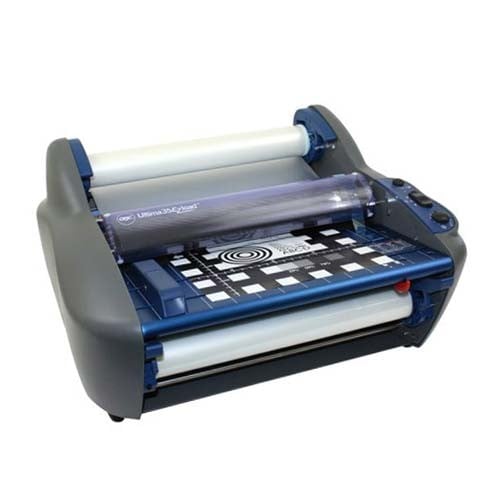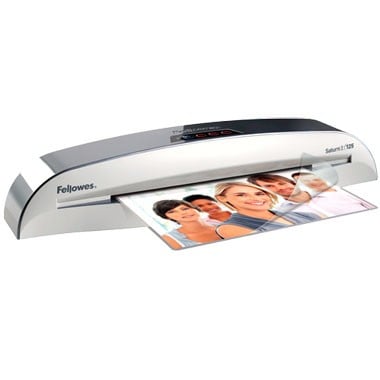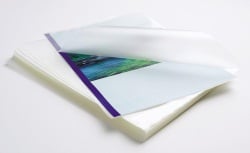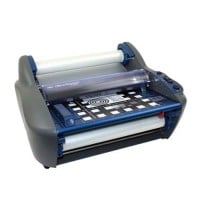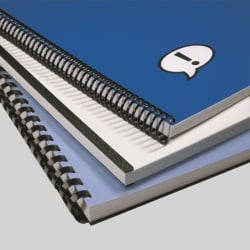MyBinding Knowledge Base
- Binding (248 Article)
- General Binding (42)
- Plastic Comb Binding (57)
- Fastback Binding (59)
- Perfect Binding (2)
- Modular Punching (8)
- Zipbind (3)
- Twin Loop Wire (13)
- Coil Binding (22)
- Thermal Binding (14)
- Strip Binding (1)
- VeloBind (4)
- Binding Covers (14)
- Proclick Binding (10)
- SureBind (4)
- Screw Post (2)
- Hole Punches (2)
- Staplers (4)
- Komtrak Insprial Binding (2)
- Paper (1)
- Rhin-O-Tuff (5)
- Binding Machines Comparison (17)
- Laminating (109 Article)
- General Laminating (26)
- Roll Lamination (16)
- Pouch Lamination (36)
- Pouch Board Laminator (3)
- School Laminator (3)
- Foil Laminating (3)
- Royal Sovereign Laminators (10)
- Laminators Comparison (3)
- Boards (11 Article)
- Bulletin Boards (3)
- Whiteboards (5)
- Chalkboards (1)
- Paper Shredders (44 Article)
- General Shredding (35)
- Industrial Shredders (1)
- Cross-Cut Shredders (2)
- Cardboard Shredders (1)
- Multimedia Shredders (1)
- Personal Shredders (1)
- High Security Shredders (2)
- Ring Binders (9 Article)
- Specialty Binders (2)
- Reinforced Paper (1)
- Health Care Punched Paper (1)
- Perforated Paper (2)
- View Binders (1)
- Index Tabs (9 Article)
- Index Tab Dividers (2)
- Copier Tabs (4)
- Pocket Folders (1)
- Custom Index Tabs (1)
- Pre-Printed Index Tabs (1)
- Paper Handling (37 Article)
- Paper Folders (9)
- Paper Joggers (2)
- Guillotine Cutters (4)
- Rotary Trimmer (3)
- Electronic Paper Cutters (1)
- Corner Rounders (2)
- Paper Scoring (2)
- Paper Drill (2)
- Booklet Makers (3)
- Stack Cutters (1)
- Paper Handling Equipment Comparison (5)
- ID Accessories (12 Article)
- Badge Holder (1)
- Lanyards (8)
- Badge Reels (1)
receive
$5off
*On order $25 or more.
How do I use Fastback PerfectBack strips with the Powis Parker Scoring Machine?
Perfectback LF strips produce a cover spine that hinges freely from the bound spine of your book block. Thus, the spine portion will lay flat when the book is opened. LF strips do not require heat for the final binding step, so you have the greatest freedom to choose your cover material or printing method. These strips are easily identified by the two thin bands of release paper, one on each side of the back of the strip.
After binding your document pages in a Fastback binder with a Perfectback LF strip, you need to score your book cover so it fits nicely around your bound book block. The Centering Guide enables you to easily and accurately locate scores for books up to 1-1/2 inches thick. This is especially helpful as your book thickness may be a bit different from what you expected due to the buildup of ink or paper thickness variations. The Centering Guide may be used with either the Single Die Holder or the Double Die Holder.
Operation with the Double Die Holder is the suggested mode and will be explained first. It makes your spine edge scores based on your document’s thickness – it also simultaneously makes secondary appearance scores 3/16″ from the spine edge on your front and rear covers.
A Demonstration Cover in your Accessory Pack summarizes how to prepare and assemble a book.
Double Die Holder Use – Scoring Your Cover
1. With your Fastback binder set in PERFECTBACK mode, bind only your pages with a Perfectback LF strip.
2. After it has cooled, place your bound book block between the Book Thickness Rings. Push the two rings together (A) and tighten the Book Thickness Locking Knob (B). Remove your book block.
3. Slide your cover under the transparent bar until your title is centered between the two silver lines. The bottom of your cover must rest against the Left Stop and the Guide Rail. Push the Lever to the right to clamp your cover in place.
4. With the Centering Guide Lock unlocked, slide the Centering Guide under your cover until the cover right edge (A) lines up with the middle of the X. Then tighten the Centering Guide Locking Knob (B).
5. Bring the Lever upright to unclamp the cover. Slide the cover over so its right edge (A) stops against step 1. Push the Lever to the left (B) to make a score.
6. Slide your cover over again so its right edge (A) stops against step 2. Push the Lever to the left (B) to make a score. The distance between the two middle scores on your cover is the same as the thickness of your book.
Double Die Holder Use – Assembling Your Document
1. With your cover and the Centering Guide in their last positions, slide your cover over so its right edge (A) stops against step 3. Push the lever to the right to hold down your cover.
2. Peel off the thin release paper from the front of your bound book block.
3. Fold your cover up to the left so it rests against the side of the Die Holder. Run your finger back and forth at the bottom at the spine area of the cover so it makes a sharp fold at the bottom.
4. Lay the book block, front facing up, on the right side of the Platform with its bottom edge resting against the Guide Rail. It is OK if part of it rests on top of the Centering Guide. Push the spine of the book block against the spine portion of your cover that is folded up.
5. With the book spine pushed fully and firmly to the left, fold the cover over your book block. Starting at the middle, rub down back and forth to secure the cover to the adhesive.
6. Release the clamp by bringing the Lever to the upright position. Remove the partially bound book and turn over. On the back side remove the remaining release paper.
7. Now fold the cover tightly all the way over the top of the book block. Rub back and forth on the top near the spine to secure the adhesive beneath the cover. Trim the book ends as desired.
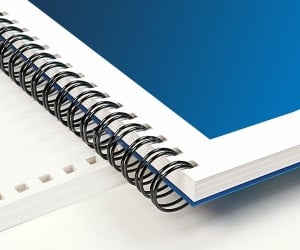
< Over the years, a number of customers have asked me whether they can use twin loop wire with their plastic comb binding machine. These customers often don’t want to have to buy a brand new machine but like the look and feel of twin loop wire binding. However, the answer to their question isn’t as simple as it seems. You see, they actually do make twin loop wire that is designed to work with the plastic comb binding hole pattern. With that said, if you want to use these wires you are going to need a way to close the wires. What is Spiral-O Wire? Let me explain a little bit more…There is a product that we carry called Spiral-O Wire. This wire has 19 loops and is designed to work with the hole pattern from a plastic comb binding machine. Spiral-O Wire is sometimes called Wire Combs or Ibico Wire and was originally designed for use with some of the older Ibico binding machines. A number of the older Ibico plastic comb binding machines also included a twin loop wire closer on the front of them to allow users to use both plastic combs and wire. This 19 loop wire was designed for this purpose. What Equipment is Needed? As the Ibico brand has been phased out by GBC and all of the older Ibico plastic binding machines have been replaced with new models, they no longer have the twin loop wire closer on the front of them. This presents a problem in trying to use these spiral-o wires since you can’t use the wires without a way to close them. One of the only options left is to purchase a Twin Loop wire closer. However, since twin loop wire closers are not incredibly cheap this option usually only appeals to users who have larger electric plastic comb binding machines. Otherwise, it is often advisable to simply buy a low end 3:1 pitch twin loop wire binding machine (the supplies are cheaper). This being said, if you have one of the older Ibico binding machines that has a wire closer included you are in luck. The Spiral-O binding supplies that we carry will work perfectly with your machine and you will be able to use both plastic combs and wire depending on your needs. These Spiral-O binding supplies are available in Black, Silver, White, Blue and Red and in sizes up to 1″ in diameter. If you aren’t sure what type of wire binding supplies that you need to work with your machine simply give us a call. Our trained sales representatives will be glad to help you find the correct supplies for use with your machine.(Read More)
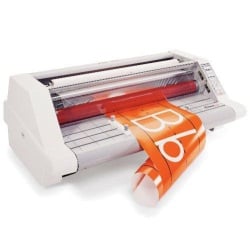

Loading...


